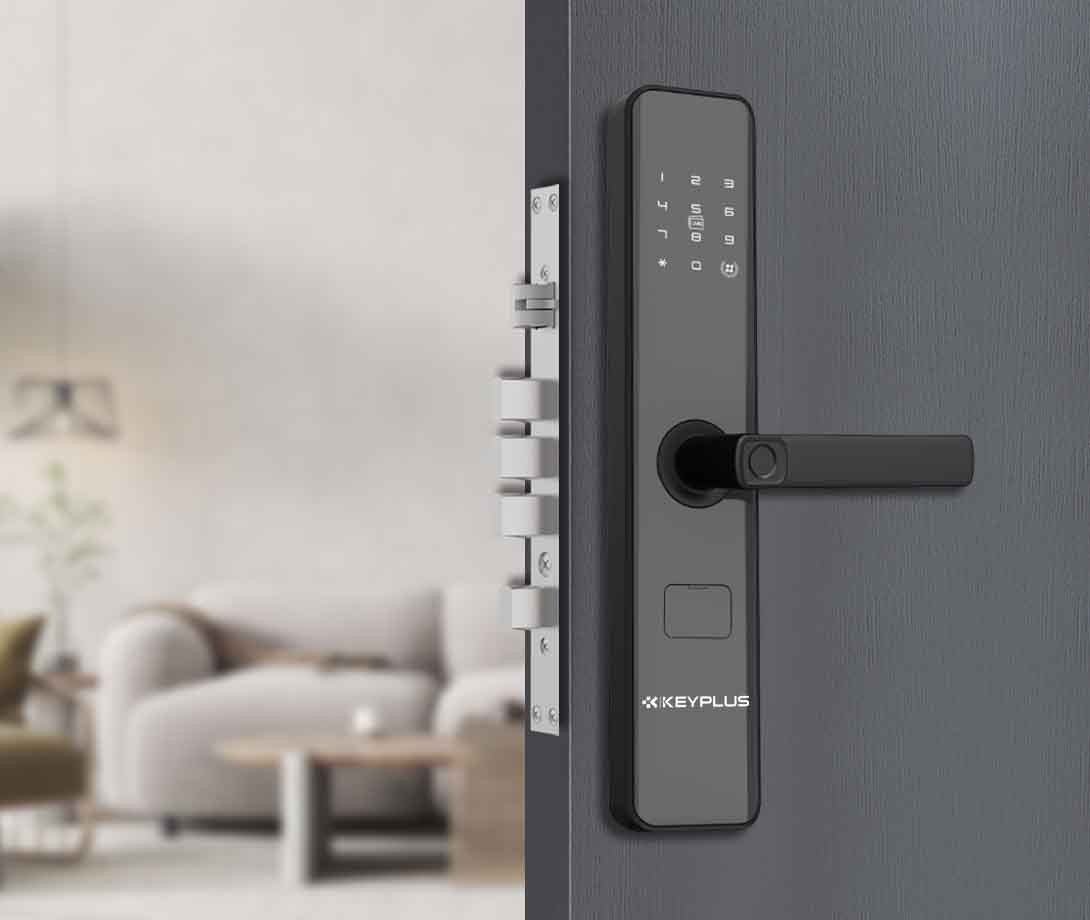Smart Door Locks: Is Face Unlock Really Safe?
As smart home technology evolves, face recognition door locks are becoming an increasingly popular alternative to keys and passcodes. These futuristic locks promise keyless entry, enhanced security, and hands-free convenience—but are they truly safe?
For American homeowners considering this technology, security is the top concern. Can facial recognition be hacked? Does it work reliably in different conditions? And how does it compare to traditional locking methods?
This in-depth guide examines how face unlock works, its security risks, real-world reliability, and whether it’s the right choice for your home.
How Do Face Recognition Door Locks Work?
Face unlock systems use biometric scanning to verify identity before granting access. Here’s how they function:
1. Enrollment Process
- The user registers their face by standing in front of the lock’s camera.
- Advanced systems use infrared (IR) sensors or 3D depth mapping to capture facial contours.
- This data is encrypted and stored locally (not in the cloud).
2. Authentication Process
When someone approaches the door:
- The camera/sensor scans their face.
- Software compares it to stored facial data.
- If there’s a match, the door unlocks.
- If not, access is denied.
Types of Facial Recognition Tech in Locks
| Technology | How It Works | Security Level |
|---|---|---|
| 2D Camera | Basic photo matching | Low (can be fooled by photos) |
| 3D Depth Sensing | Maps facial structure | High (harder to spoof) |
| Infrared (IR) Scanning | Detects heat/skin texture | Very High (anti-spoofing) |
Note: Cheaper locks may use 2D cameras, which are less secure than 3D or IR-based systems.
Is Face Recognition Safe for Door Locks?
Security Advantages
No Physical Keys or Codes Needed – Eliminates risks of lost keys, lock picking, or shoulder surfing.
Biometric Uniqueness – Faces are harder to replicate than passwords.
Anti-Spoofing Features (in Advanced Locks) – Infrared and 3D scanning can detect masks, photos, or videos.
No Wear & Tear – Unlike fingerprint scanners, face recognition doesn’t degrade over time.
Potential Security Risks
False Acceptances – Some systems may mistakenly unlock for a similar-looking person (e.g., twins).
False Rejections – Changes in appearance (glasses, beard, makeup) can cause access issues.
Hacking Concerns – While rare, cyberattacks on smart locks are possible if connected to Wi-Fi.
Privacy Issues – Some users worry about biometric data storage (though most locks store info locally).
Can Face Recognition Be Hacked?
While advanced systems are secure, potential vulnerabilities exist:
1. Photo/Video Spoofing (for 2D Cameras)
- Low-quality face locks can be tricked with a printed photo or video replay.
- Solution: Choose locks with liveness detection (IR or 3D scanning).
2. Lookalike or Twin Bypass
- Some systems may fail to distinguish between identical twins or family members with similar features.
- Solution: Enable multi-factor authentication (e.g., face + PIN).
3. Technical Glitches
- Poor lighting, camera obstructions, or software bugs can cause malfunctions.
- Solution: Ensure the lock has a backup entry method (PIN, key, or smartphone unlock).
Face Unlock vs. Other Smart Lock Methods
| Feature | Face Recognition | Fingerprint | Passcode (PIN) | Traditional Key |
|---|---|---|---|---|
| Security | High (with 3D/IR) | High | Moderate | Low (pickable) |
| Convenience | Hands-free | Fast | Manual entry | Requires key |
| Reliability | Depends on lighting | Works in most conditions | Always works | Always works |
| Privacy Concerns | Some biometric worries | Minimal | None | None |
Verdict:
- Most Secure: 3D/IR face recognition or fingerprint scanners.
- Most Convenient: Face unlock (no touching required).
- Most Reliable: Passcode or hybrid locks (works in all conditions).
How to Make Face Unlock More Secure
If you choose a facial recognition lock, follow these best practices:
1. Pick a High-Quality Lock
- Look for 3D depth sensing or infrared scanning (avoid basic 2D cameras).
- Ensure it has anti-spoofing technology.
2. Use Multi-Factor Authentication
- Combine face unlock with a PIN or fingerprint for extra security.
3. Set Up Backup Entry Methods
- Ensure the lock has a physical key override or smartphone access in case of failure.
4. Regularly Update Firmware
- Keep the lock’s software updated to patch security vulnerabilities.
Who Should (and Shouldn’t) Use Face Unlock?
Best For:
- Tech-savvy homeowners who want hands-free entry.
- High-security needs (with 3D/IR face scanning).
- Families with kids (no keys or codes to lose).
Not Ideal For:
- Budget-conscious buyers (advanced face locks are expensive).
- Extreme weather areas (some cameras struggle in direct sunlight or heavy rain).
- Privacy-focused users who dislike biometric data collection.
Final Verdict: Is Face Unlock Safe?
Yes—if you choose the right lock.
- High-end face recognition locks (3D/IR) are very secure and hard to fool.
- Basic 2D face locks are risky and can be tricked with photos.
- For maximum safety, use multi-factor authentication (face + PIN or fingerprint).
If you prioritize convenience and cutting-edge security, a 3D facial recognition lock is a great choice. But if you want a more budget-friendly or foolproof option, a fingerprint or passcode lock may be better.
Would You Trust a Face Recognition Lock?
What’s your take—would you install one at home, or do you prefer traditional security methods? Share your thoughts in the comments!
Post time: Jun-20-2025


